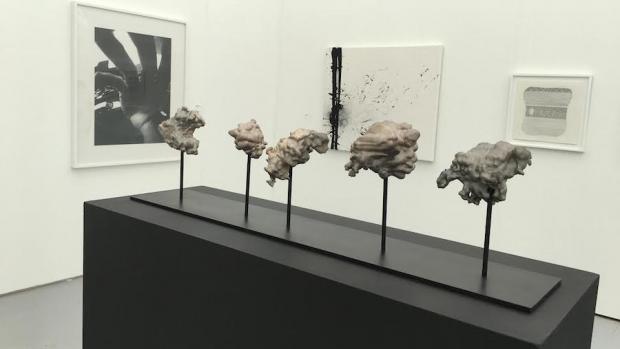Where Physics and Art Intersect

In the fall of 2016, the American Physical Society’s Division of Fluid Dynamics hosted a presentation “Creative Turbulence: Experiments in Art and Physics,” whose co-authors included Dean Katepalli Sreenivasan, postdoctoral researcher Enrico Fonda, Associate Professor of Integrated Digital Media R. Luke DuBois, and Professor of Mechanical and Aerospace Engineering Maurizio Porfiri. In the presentation, they and their fellow researchers posited that the creative power of art can help instruct and engage audiences who might not otherwise be receptive to absorbing scientific material. (Interdisciplinarity, they asserted, defines new trends in research, and they pointed out that works at the intersection of art and science are growing in popularity.)
To that end, they presented a public-facing collaboration between physicists and engineers performing research in fluid dynamics and audiovisual artists working in cutting-edge media installation and performance.
One of the artworks, comprised of 3D prints of human speech, was recently exhibited at Art Basel in Miami. By renowned artist Rafael Lozano-Hemmer, “The Atmospheric Memory” was inspired by Charles Babbage’s theory that spoken words have an everlasting impact on the universe and involved a technique to capture the 3D form of air turbulence as it exits the mouth of a speaker.

“Collective Motion” created by artist David McLeod and Professor Maurizio Porfiri
Another piece, “Collective Motion,” created by artist David McLeod and Porfiri using the state-of-the-art animation software Cinema 4D, visualizes the behavior of interactive agents that organize themselves to move in concert. The concept is related to flocking (as birds do) and schooling (as fish do) — and more broadly to non-equilibrium systems undergoing a phase transition. The structured behavior of these active particles bridges the gap between the motion of living things and the motion of inactive matter, such as in classical fluid dynamics.
The authors hope to soon mount an entire exhibit, open to the public, that could include such works as “Vortices,” which depicts funnel cloud and tornado formations that respond to viewers in real-time through the use of motion-tracking and depth-sensing, and “The Visualization of Light Reflecting on Virtual Pools,” which involves modeling the water of actual private swimming pools at specific times of the day.





